- Home
- Michael Crichton
Venom Business Page 16
Venom Business Read online
Page 16
In the shower, she washed herself carefully and thought about what she must do. The plan: the plan was the thing. Richard must be foiled, and soon. Lucienne had worked too hard to allow anything else. She had given up her career, given up everything, for Herbert. Now that Herbert was gone, only the money remained.
Was it so bad to want the money?
No, she thought.
She deserved it.
And she would have it.
4. ANGRY CAT
DR. JONATHAN BLACK PARKED his Aston Martin in the parking lot next to the research wing of St. Catherine’s Hospital. Briefcase in hand, he went into the lobby and took the elevator to the third floor. The elevators in the building were large, full-hospital size, with walls of stainless steel.
He went directly to his office, at one corner of the psychopharmacology section. He set his briefcase down and looked through his mail. As usual, it consisted mostly of reprints of articles by other scientists working in areas related to Black’s own field.
His secretary came in, and said, “Doctor Black, the surgery is ready.”
“All right,” he said, shrugging out of his coat. “Tell them I’m coming shortly.”
He hung up his coat on a hook by the door, removed his vest, and went down the corridor in shirtsleeves. The operating theater was at the end of the wing. The red light next to the doors was on, indicating that the theater was in use.
Black went in a side door and entered the scrub room. There was a row of lockers along one wall. He stripped to his undershorts, putting his clothes in his locker; then he put on a gown, mask, and cap. He pulled back the sleeves of his gown and stepped to the sink. The water was operated by a foot pedal. He washed his hands with hexachlorophene soap for ten minutes, then dried them under an air jet. Then he pushed through the swinging door with his shoulder, keeping his hands clean, and faced the operating team: three men in gowns and masks, leaning over a center table beneath a bright overhead lamp. The team straightened as he entered.
“All set?”
“Yes, doctor.”
A nurse came up and slipped rubber gloves over his hands. Black flexed his fingers and said, “We’ll check the charts first.”
This would be a difficult operation, the most delicate he had ever performed. He had attempted three previous operations of the same type, and the results had been poor. In one case, death had resulted on the table.
He picked up the charts, which were laminated in plastic that could be sterilized. The charts consisted of a map of the brain, with coordinates and gyri laid out
One of the team said, “It’s the hypothalamus, doctor?”
“That’s right,” Black said. “We’ll take the anterior nucleus this time. Bilaterally.”
“Yes, sir.”
“Is the cranium removed?”
“Yes.”
He stepped forward and looked at the body on the table. It was a young cat, perhaps a year old. The animal was on its back, its four paws tied down carefully. The skull cap had been removed, exposing the pale pink surface of the brain.
“Grid,” Black said.
The grid was brought. It was a cagelike affair, which fitted over the head and attached to it. By a series of gears, a probe could be positioned with the grid at any desired coordinates. This allowed a point within the three-dimensional substance of the brain to be fixed.
“What is the anaesthetic?” Black asked, as he screwed the grid onto the head.
“Cyclopropane and a local for the scalp, since we were removing bone and skin flap,” said one man.
“And it was?”
“Procaine amide,” the man said.
“All right.” Black glanced at the chart. “The coordinates for the anterior nucleus are A, twelve, seventy-one. Fix that.” Those directions would locate the point in three planes. The anterior nucleus was a diffuse collection of nerve cells deep within the brain. It was felt to be involved with emotional responses in some poorly understood manner.
“Fixed, sir.”
“Nitrogen probe,” Black said.
A large cylindrical tank on wheels was brought over. At the top on the cylinder was a gauge pressure and a slim length of metal tubing, which ended in a long, needle-sharp probe. The probe was given to Black, who inserted it through the grid and lowered it until it almost touched the surface of the brain.
He paused. “All set?”
The others nodded tensely.
Black lowered the needle precisely seventy-one millimeters into the brain. The sharp probe penetrated the doughy substance easily. At the exact distance, he stopped.
“Nitrogen,” he said. “We’ll give it a two-second burst.”
Someone pressed the button on the tank. A faint hissing sound as liquid nitrogen at minus two hundred ten degrees flowed through the tubing, down the probe, and out into the brain of the cat. Whatever that liquid touched, it would destroy instantly, freezing it, killing it.
“Two seconds, doctor,” a man said.
“Very good.” Black removed the probe, feeling the cold dampness of the metal after the nitrogen had flowed through it. When he pulled it free of the brain, the tip of the needle was still smoking.
“All right,” he said, as the nitrogen bottle and probe were wheeled away. “Close it up.”
The team went into action, replacing the cup of bone which covered the brain, then suturing the skin over that. Black watched for a while before he left the room.
As he passed through the swinging door, he said, “Keep it on amobarbital for forty-eight hours. Just in case.”
They nodded. He stripped off his operating gown and mask in the scrub room and dropped them into a large laundry sack. He washed his hands again, and returned to his office, stopping by the laboratory to tell the assistants to expect a new cat, and to treat it gently: The cat would probably try to destroy itself.
In his office, he considered the implications of what he had just done. He had taken a cat, a perfectly normal, gentle cat, and turned it into a monster by destroying a few hundred crucial nerve cells. Without those cells, now frozen by nitrogen, the cat would be wholly changed: its personality, its mannerisms, the way it walked and acted. Everything changed.
A few hundred brain cells.
He shook his head slowly. In some ways, it was astonishing to think that a creature’s personality could reside in so few cells, such a small amount of protoplasm. There were other parts of the brain, less significant than the anterior nucleus, which could be destroyed with no demonstrable effect on the animal.
It came down to a matter of delicacy. Every creature had its physiological weak point, its Achilles’ heel. And every man had his psychological weak point. Black thought of Raynaud.
A straightforward man, Raynaud. He wore his feelings on his sleeve. He knew what he wanted, and he knew how to get it.
Raynaud was easy.
Raynaud would change, under the proper stimulus, as swiftly and as easily as the cat had changed. Raynaud wanted wealth, and he would do anything to get it.
Anything at all.
Walking down the corridor, Kemelman, research chief of the unit, said: “Apparently, you are being considered strongly. I might as well tell you I’ve been recommending you for several years.”
“That’s very good of you.”
“You deserve it,” Kemelman said flatly.
Black lit a cigarette. “My answer,” he said, “is quite simple. I would be flattered and honored.”
Kemelman got up. “Good. I’ll let them know.” He went to the door. “This isn’t official, you understand, I don’t want to raise false hopes.”
“I understand.”
“Something still might go wrong in the committee. But that’s unlikely.”
Black nodded.
Kemelman smiled. “We’ll see what happens. Good luck, John.”
“Thanks.”
“See you.”
Kemelman left. Black stood and walked around the small office, smiling to himself. F.R.
S.: it was almost too good. He had wanted to be a Fellow of the Royal Society for years, and privately he had felt he had deserved it for the last five or six years. His research had been outstanding, with broad implications. The Americans had made use of some of his data for their space program; the British Army had used it in their training for brainwashing and interrogation techniques. A psychiatric group in Geneva used much of his experimental material in the treatment of recalcitrant human cases.
But still: to be elected to the Royal was a risky and uncertain business. Some of the most deserving scientists, like Fleming, discoverer of penicillin, had waited years before being accepted. It was absurdly exclusive, with only six hundred members out of the thousands of scientists in the country. The exclusivity meant that politics were important to membership, but it also meant that the F.R.S. was more prized than a knighthood.
Often, he had driven past the headquarters in Burlington House, across the street from the Society of Antiquaries. He had long since come to regard it as the most exclusive and desirable club in London. It was old, founded by King Charles II, and venerable, with Newton, Wren, Huxley, Kelvin, and Dale as past presidents. And it had its traditional avenues of entrance, the foremost being Cambridge, which was fortunate for Black.
He looked across the room at his diplomas. Most prominent was the parchment from Cambridge University. Black had gone there in 1939, obtaining a starred First in his Natural Sciences tripost three years later. Not many starred Firsts were given in the sciences, and his success immediately led him to St. Cat’s, where he did three years of hospital before being licensed to practice. Black worked as a physician for several years; the war was on, and the beds were filled with wounded and maimed soldiers and civilians.
As time passed, however, he became increasingly interested in psychological injuries of wartime—men who had recovered yet felt they were still ill; men who had not been injured at all but remained fixed rigidly in a catatonic trance; men with slight wounds who were convinced they were going to die; hysterical women who had lost husbands or boy friends and acted almost as if they had undergone amputation of a limb. When the war was over he started in psychiatry and was practicing a few years later. With his academic credentials and professional contacts, and with the help of his cousin Herbert Pierce, who by then was a millionaire many times over, Jonathan Black opened plush offices near Harley Street, and began to treat the cream of British society.
He accepted his success easily. As the only child of a prominent Scottish physician, and the descendant of a long line of important scientists, it seemed only natural that he should succeed. He was, for a six-year period, the most fashionable psychiatrist in all London, even more fashionable than Sir Lawrence Poole or Henry Carter-Wright. He made a good deal of money, though never as much as Herbert Pierce, whose personal wealth at that time was increasing by twenty million pounds a year.
That always irritated Black, even though Herbert never made a thing of it. They used to meet for lunch once or twice a month at Le Camargue. Herbert usually spent the meal asking for personal advice, and Black did not discourage him. The personality of Herbert—a rather stupid man, when all was said—fascinated him. In particular, there was a peculiar blend of hard-nosed business acumen, mixed with astonishing personal naïveté. It was remarkable that a man could be such a good judge of the pound, and such a poor judge of flesh. Lucienne was a perfect example: when Herbert announced that he wanted to marry a restless tart of a girl who had a reputation as vast as all London, Black was speechless. And then when Herbert explained his theories about reforming her, making a proper woman of her…
Even now, Black smiled sadly at the recollection. Men lived in a world of their own making, an unseen world of their illusions, hopes, and fears. In the case of Herbert, his illusions had proved his undoing.
And, eventually, it would prove the same for Lucienne.
Black had never met her at the time Herbert first proposed his intention of marriage. He knew of the French singer only by reputation, from the endless lewd stories and jokes in circulation. He did not then know how charming and willful she was, how subtly she could play upon a man’s emotions.
The secretary stuck her head in. “Doctor Black, the patient is recovering.”
Black snapped out of his thoughts. “Right,” he said. “I’ll see to it.”
When he arrived in the lab, the cat was lying on its side, asleep, breathing gently. Its shaved head was covered in bandages, then a layer of cotton wool, and finally a protective plastic helmet.
The assistant handed Black a hemostat, a large instrument shaped like a pair of pliers. Black opened the door to the cage, and squeezed the cat’s paw. The animal stirred slightly.
“When was the last amobarb injection?”
“Immediately post-op, doctor.”
“What did you give?”
“Point five milligrams per body kilo.”
“Good.”
The effects would wear off at any time. Even as he watched, the eyelids flickered and the paws moved. The whole body gave a slight shudder.
“Better step back,” Black said to the assistant
The cat opened its eyes, blinked, and kept them open. Slowly, it got to its feet Black stared impassively at it. The cat turned, licked itself, and turned again.
“Come on, kitty. Let’s see your true self.”
The cat did nothing. It licked itself. “Come on, kitty.” He prodded it with the hemostat, reaching through the bars.
The effect was immediate. The cat bared its teeth, fur rising. It gave a hiss and a snarl and flung itself at the bars of the cage, growling, chomping down on the bars. It struck the cage hard, and fell back. It picked itself up and hurled itself forward a second time, mouth wide, rage showing in the eyes.
“A vicious, unthinking beast,” Black said, with a slight smile. With its hypothalamus destroyed, the cat was a prisoner of emotion, unable to modify or control it.
The assistant was a young man from Manchester with a BS degree. His face was pale. The cat leapt forward, snarling, banging against the cage, again and again.
“Good Christ,” said the assistant
“Now you see the need for the plastic helmet.”
“What shall we do with her, sir?”
“Meprobamate, for the time being,” Black said. “We will start shock treatment in the morning. Give her a full milligram per kilo for the next day. Administer it with heavy gloves. Right?”
“Right,” said the assistant, a bit shaky.
In his office, Black made out a protocol for the following day’s experiments with the enraged cat. He scribbled down the duration and power of the shocks, and the dosage of the various drugs to be used. He was immensely pleased that the surgery had gone well. Now they could begin duplicate testing.
The cat was to serve as a control for further experiments. The cat was angry; it responded with violent rage, for purely physical reasons—part of its brain was destroyed. They knew this. But suppose a drug existed which could duplicate the effects?
This cat would serve as a standard against which violent behavior could be examined. And, in fact, there existed a true violence-producing drug. It was highly experimental, very expensive, and difficult to obtain.
But with any luck, he would have a pure gram of it by this afternoon.
And the experiments could begin.
5. THE CONFERENCE
“LET US ASSUME,” SAID Charles Raynaud, “that I am about to be screwed”
He paced up and down Richard’s apartment, smoking a cigarette. He was alone; he had been pacing for hours.
“And let us assume,” he said, “that somebody stands to profit by a half a billion dollars.” He continued pacing. “Who?”
All right he thought. Good question: who?
“Beats me.”
He stared at the large painting of the hamburger dripping catsup.
“Lucienne doesn’t want Richard dead. She hired me. But she won’t give me a gun. O
n the other hand, I already have a gun.”
He reached over to the coffee table and picked up the gun be had retrieved from the guest room closet a few minutes before. The gun he had taken from the little man in Soho.
“In theory, nobody knows I have this gun.”
But in fact?
He turned it over in his hand, a snub-nosed .38, black and heavy, mean. He broke it open and rolled the cartridges out into his hand. He examined them carefully, and determined that they had been home-loaded; there were scratches on the shell casings. Perhaps not surprising in a country like England. But then again…
He bent over to look closer at the bullets themselves. They were grayish, dull in the light streaming in through the window. He squeezed one, and a slight gray powder came off on his fingers. He hefted one bullet in his hand, frowning: it was light.
Too light.
Quickly, he walked to the window and glanced out. It was a quiet Saturday morning; the street was deserted.
Raynaud reloaded the gun and fired at the opposite wall. The report was deafening; the gun kicked up in his hand. So: at least there was powder in the casings. That was something.
But when he examined the wall, touching it with his fingers, he had a surprise: the bullet hadn’t penetrated the plaster. It had hardly made a dent. Instead, there was a small gray smudge on the white surface, and a little heap of gray powder on the floor.
Clay.
Quite clever. The clay was gray and dull, and looked just like lead. It fired like a regular bullet, with just one difference.
These bullets wouldn’t kill a turkey with a bad heart. Fired at a man, they would probably not even penetrate the skin. They might cause a scratch or a bruise, but nothing more.
Strange.
He looked at the gun and saw the identification number along the grip. Probably Longwood still worked for the police in London. Good old Longwood, a tall, thin bureaucrat who was the pride of the police force because he was the model of the reformed criminal.

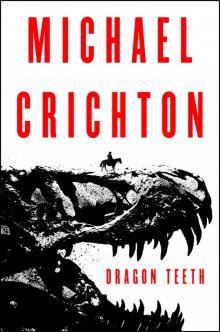 Dragon Teeth
Dragon Teeth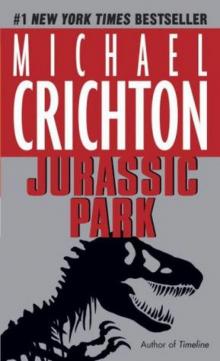 Jurassic Park
Jurassic Park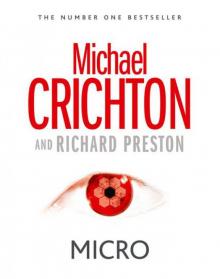 Micro
Micro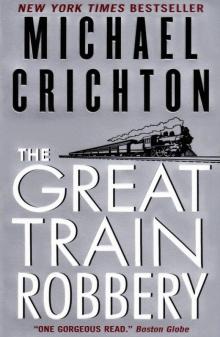 The Great Train Robbery
The Great Train Robbery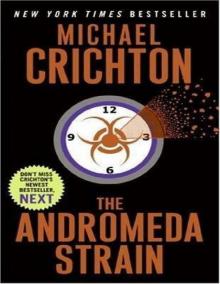 The Andromeda Strain
The Andromeda Strain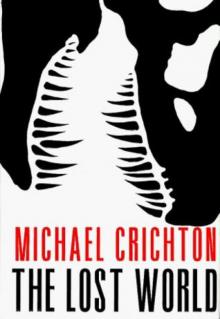 The Lost World
The Lost World Congo
Congo Travels
Travels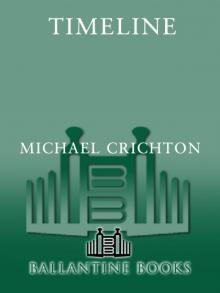 Timeline
Timeline Sphere
Sphere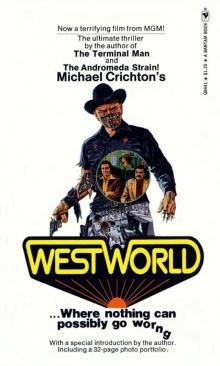 Westworld
Westworld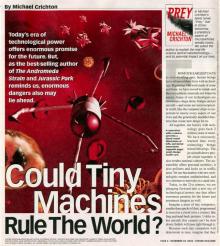 Prey
Prey State Of Fear
State Of Fear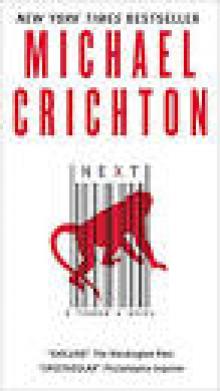 Next
Next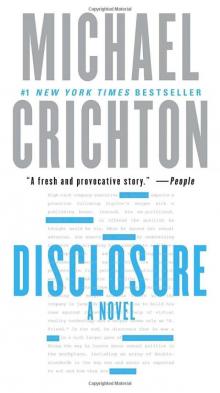 Disclosure
Disclosure Pirate Latitudes
Pirate Latitudes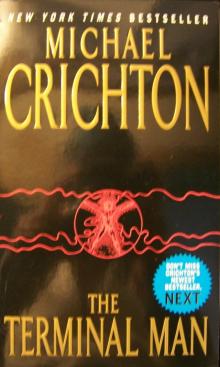 The Terminal Man
The Terminal Man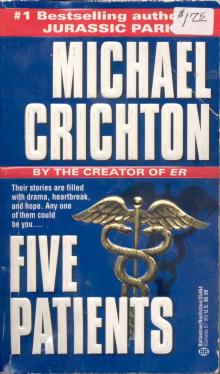 Five Patients
Five Patients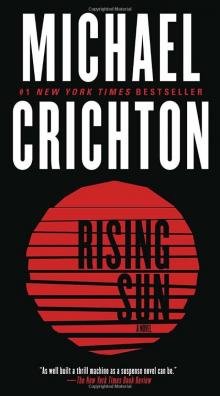 Rising Sun
Rising Sun Binary
Binary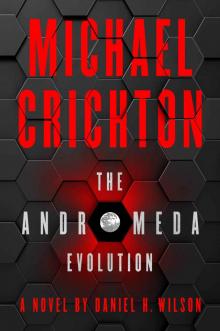 The Andromeda Evolution
The Andromeda Evolution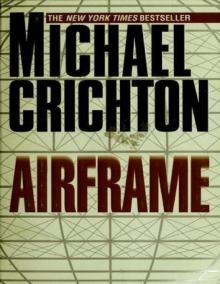 Airframe
Airframe Easy Go
Easy Go Drug of Choice
Drug of Choice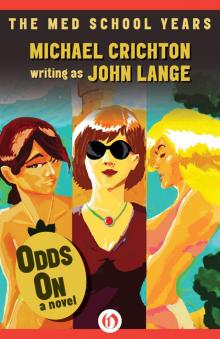 Odds On: A Novel
Odds On: A Novel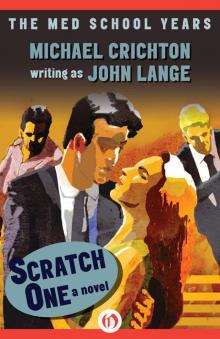 Scratch One
Scratch One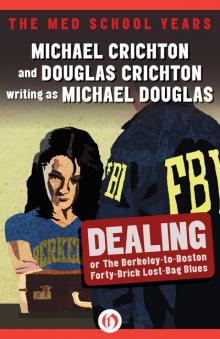 Dealing or The Berkeley-to-Boston Forty-Brick Lost-Bag Blues
Dealing or The Berkeley-to-Boston Forty-Brick Lost-Bag Blues Venom Business
Venom Business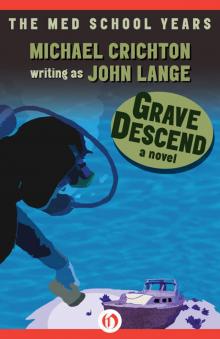 Grave Descend
Grave Descend Gold - Pirate Latitudes
Gold - Pirate Latitudes Binary: A Novel
Binary: A Novel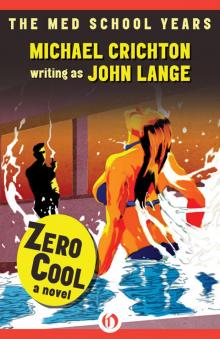 Zero Cool
Zero Cool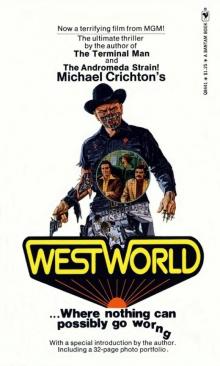 Delos 1 - Westworld
Delos 1 - Westworld